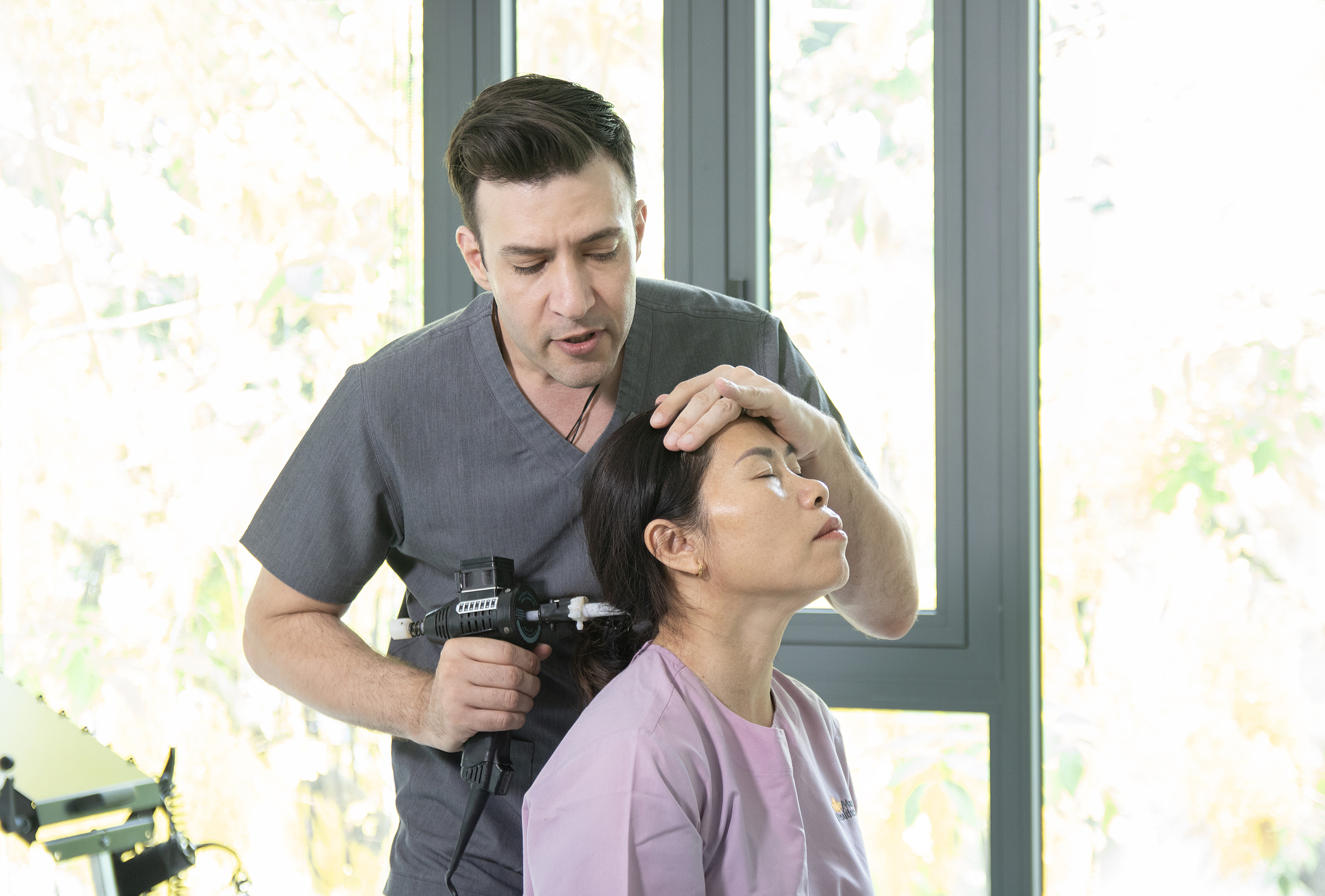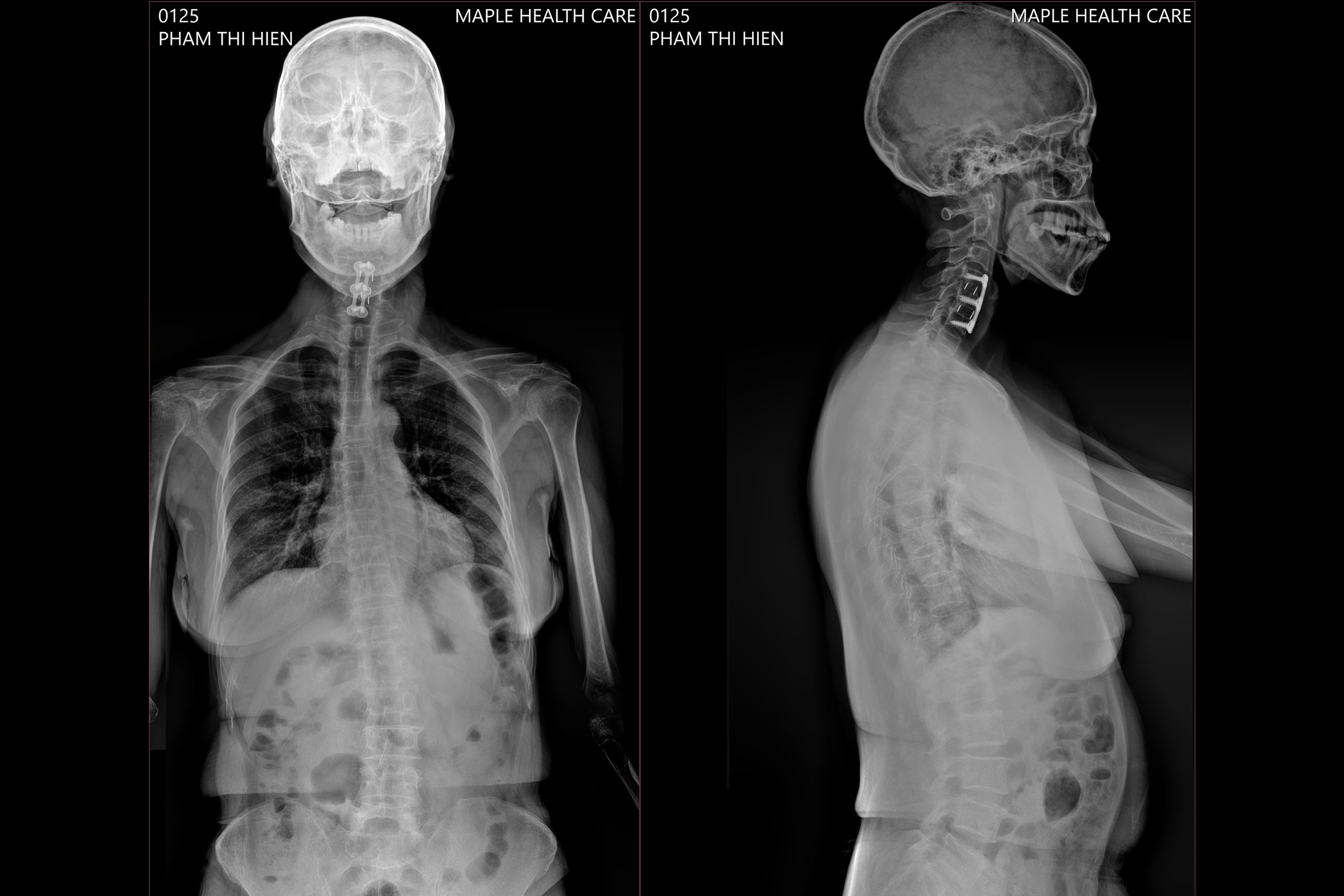Dr. Paul D’Alfonso, Director of Maple Healthcare (TP HCM), a clinic specializing in musculoskeletal disorders, says that after spinal surgery, many patients fear any impact on or around the operated area. They worry about causing further damage, loosening implanted screws and plates, or triggering a recurrence of the original injury. Consequently, many resign themselves to living with pain, muscle stiffness, insomnia, and limited mobility, believing these are unavoidable consequences of surgery.
Many believe post-operative pain stems solely from the surgical site. However, it often originates from adjacent vertebrae. When one area is immobilized with screws and plates, other vertebrae bear increased pressure, leading to widespread pain, numbness in the extremities, muscle weakness, and restricted movement. This can result in chronic insomnia and reduced quality of life. Many turn to pain medication for quick relief. While medication can temporarily alleviate symptoms, the underlying problem persists, potentially affecting other organs like the stomach, kidneys, and liver.
Dr. Paul explains that chiropractic adjustments can be safely administered after spinal surgery when performed correctly. In some cases, it can even accelerate recovery.
 |
Dr. Paul uses Chiropractic to help patients accelerate their post-surgery recovery. Photo: Maple Healthcare |
Dr. Paul uses Chiropractic to help patients accelerate their post-surgery recovery. Photo: Maple Healthcare
Dr. Paul cites the case of Hien, a 58-year-old patient from Gia Lai, who fractured two cervical vertebrae and damaged 5 spinal segments in an accident. After surgery to stabilize her spine, she experienced persistent lower back pain, limb weakness, and immobility. An examination at Maple Healthcare revealed misaligned vertebrae, directly impacting her mobility. Dr. Paul implemented a personalized treatment plan combining chiropractic adjustments, physiotherapy, and rehabilitation.
Hien, who once believed she would be confined to a wheelchair, experienced significant pain reduction and improved sleep after treatment. Most importantly, she regained the ability to stand, walk, and resume her normal life.
 |
The examination revealed that Hien's cervical spine was misaligned, limiting her mobility. Photo: Maple Healthcare |
The examination revealed that Hien's cervical spine was misaligned, limiting her mobility. Photo: Maple Healthcare
Dr. Paul clarifies that chiropractic adjustments do not directly target the surgical area or the parts stabilized by screws and plates. Instead, they focus on adjusting adjacent vertebrae under compensatory pressure. This relieves nerve compression, reduces muscle stiffness, and restores spinal flexibility. When performed correctly, these adjustments can alleviate pain and muscle stiffness, improve mobility, enhance sleep quality, and support overall recovery.
Hien's story is not unique. At Maple Healthcare, every post-surgical patient follows a different recovery path. Treatment plans are fully personalized based on diagnostic imaging (X-rays, MRI) and the patient's current condition.
"The key is not finding a single method to rely on, but building a personalized recovery plan, scientifically designed and tailored to each patient's body," says Dr. Paul. According to him, a truly comprehensive and sustainable recovery journey involves a multi-faceted approach. First, chiropractic adjustments realign misplaced vertebrae, relieving pressure on the nervous system. Second, physiotherapy promotes blood circulation, relaxes muscles, and reduces stiffness at the surgical site and adjacent vertebrae, preventing recurring pain. Third, rehabilitation exercises help restore balance, correct posture, and minimize muscle atrophy and joint stiffness. Finally, adjustments to lifestyle and home exercises empower patients to actively manage their health, keep muscles engaged, enhance treatment effectiveness, and shorten recovery time.
"Most importantly, patients need to persevere with rehabilitation exercises, maintain a healthy lifestyle, and attend regular check-ups to ensure lasting results," Dr. Paul emphasizes.
Dr. Paul adds that Maple Healthcare doesn't just treat immediate pain. They listen to and understand the changes in patients' bodies to develop effective long-term treatment plans. This combined approach makes a difference: it not only relieves pain but also helps patients regain their quality of life.
Hien shares her experience:
Kim Anh












